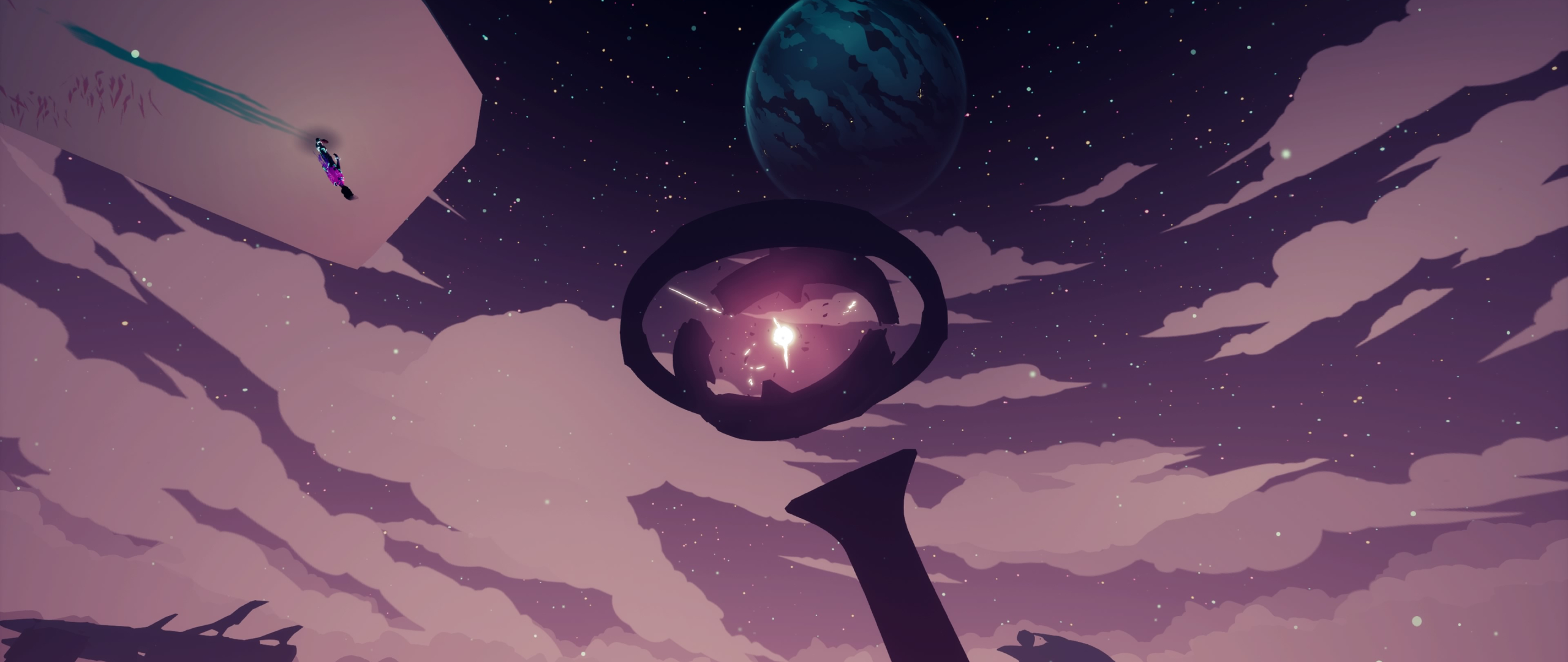Laptop Mag Verdict
Solar Ash’s sprints through desolate environments are exhilarating, but its wondrous presentation is tethered by trite iconography and an unsurprising script. Thankfully, an excellent use of color, magnificent skyboxes and heart-pounding bosses imbue Heart Machine’s latest project with life.
Pros
- +
Gorgeous environments
- +
Electrifying color palette
- +
Spectacular bosses
- +
Satisfying movement
- +
Stunning skyboxes
Cons
- -
Simple challenges
- -
Conventional iconography
- -
Inconsequential combat
Why you can trust Laptop Mag
Solar Ash pushes players through the colorful remains of a forsaken world in a project that is full to the brim with Heart Machine’s tangible passion. It’s impossible to look up into the sky and not feel the weight of the cosmos bearing down upon you.
Solar Ash’s cool-toned color palette, diverse skyboxes and lovely environments contribute to some of the most invigorating art direction in gaming this year. Unfortunately, it is hindered by overly familiar visual designs and narrative beats. Battles have little to no importance and a chunk of sprinting challenges could have been re-conceptualized. Regardless of these flaws, Solar Ash presents an adventure worth partaking in.
A hopeful quest
Solar Ash puts players in the shoes of Rei, a Voidrunner on a quest for something known as the Starseed. This mysterious anomaly, which has been sought after by her people for some time, is thought to be key in restoring her destroyed home planet. And after a surprise confrontation with a mysterious entity known as “Echo,” Rei goes on a journey to restore power to the Starseed and save her people. While the premise is simple, the game does a good job balancing the frequency of its cutscenes with how often the player gets to explore and parkour.
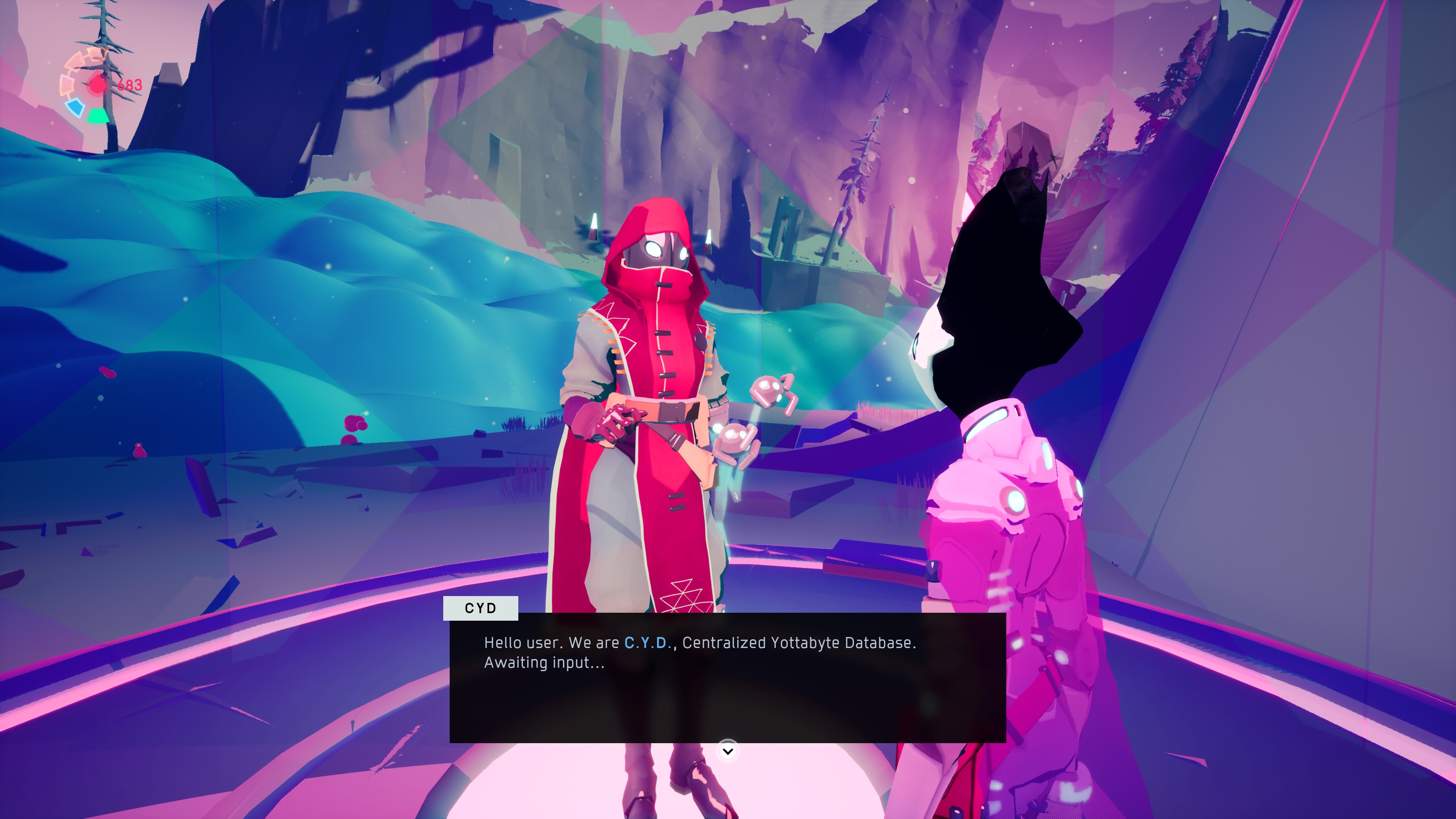
The most engrossing thing about Solar Ash’s narrative is its sense of mystery. The game begins at a bizarre point in Rei’s journey, and although she knows a lot about what’s happening, the player’s confusion adds intrigue. Finding Void Logs to unearth the deeper puzzles of the Starseed is also exciting. This is especially true when Rei and Echo begin their cryptic dialogue exchanges, as it hints at something more going on.
However, Solar Ash goes off the rails towards the end. Its finale is accompanied by bone chilling music, staggering scenery and convincing performances, but the plot twists are traditional. I won’t spoil the ending of the game, but two of its biggest moments fit neatly into a series of tropes that are often criticized for their predictability.
Freeform skating
Developer Heart Machine does a good job making Solar Ash fun to explore. Even when the player falls off a cliff or misses a jump, it’s never disheartening, as Rei can skate her way up back to that point quickly. Players can also dash, allowing them to gain a burst of momentum. When this is timed correctly, they can gain additional speed and climb onto spots they wouldn’t be able to normally. The parkour isn’t super in-depth, as players cannot perform insane combos, but the maneuverability makes the game’s world more welcoming.
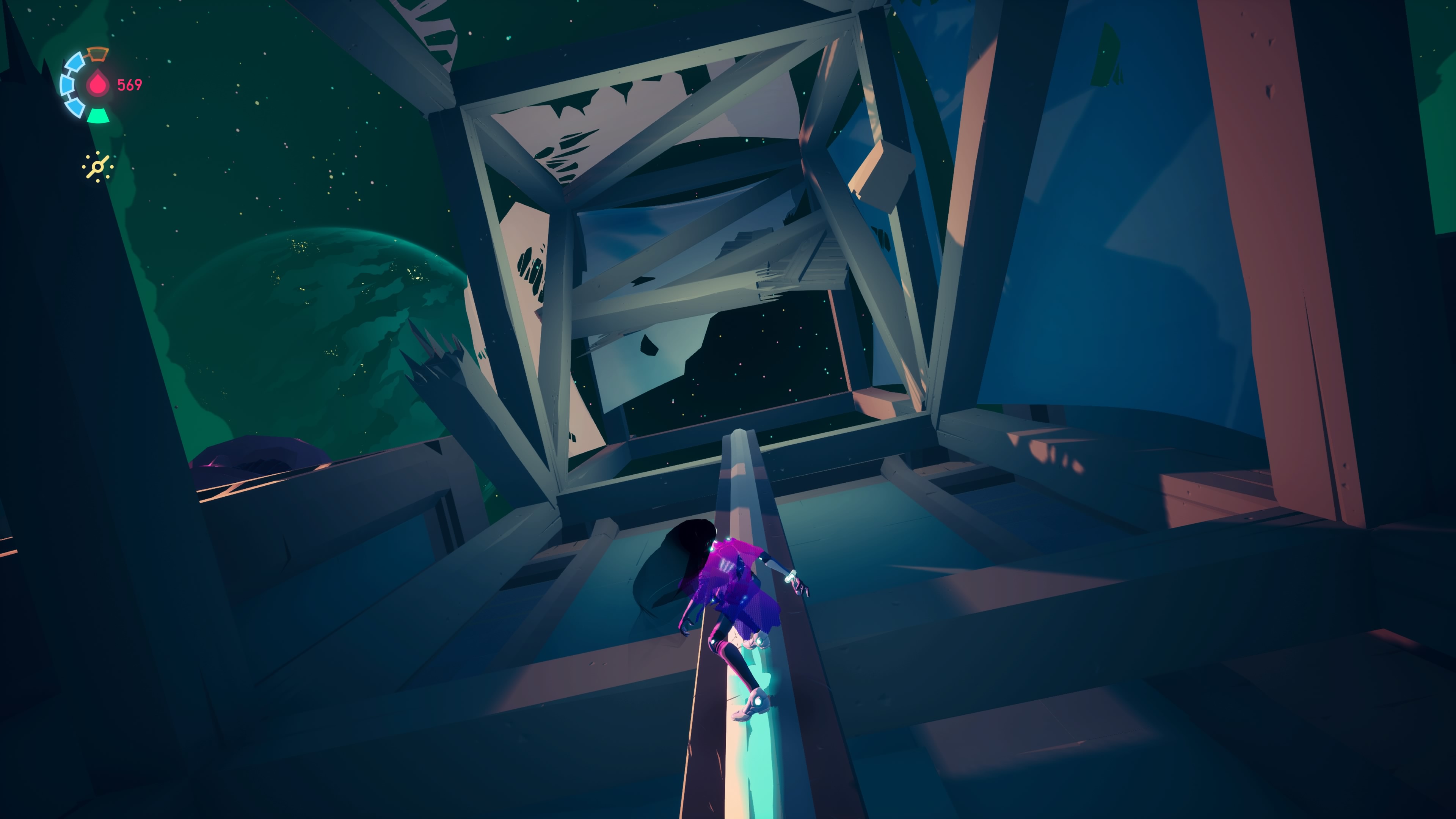
While running around Solar Ash, the player will come into contact with troublesome monsters. However, their presence doesn’t add much until later, as players can slash at these creatures while sprinting around without much thought. After a while, the game escalates and introduces enemies that snipe you from a distance, charge at you and create shockwaves that rupture the ground beneath you. Even then, most of these battles aren’t particularly exciting until the final area puts a bunch of them in one place and expects the player to survive. I would’ve preferred if it escalated to this point sooner, as regular battles against enemies lack intensity for most of the game.
The ashen lands
Solar Ash uses a motif of floating debris to decorate many of its zones. Much of the game is structured this way, having the player parkour along flying islands littered across shattered environments. These destroyed lands are bolstered by an excellent use of color, but they only provide snapshots of a world rather than one that feels wholly constructed. As a result, Solar Ash’s short draw distance was a smart choice, as the game looks at its best when things are too far away to notice the chopped up level design. It also looks nice when the player is in the middle of an area, as it provides the brief illusion that your surroundings are larger than they actually are. But at certain points, the game can look unfinished rather than wrought by destruction or chaos.
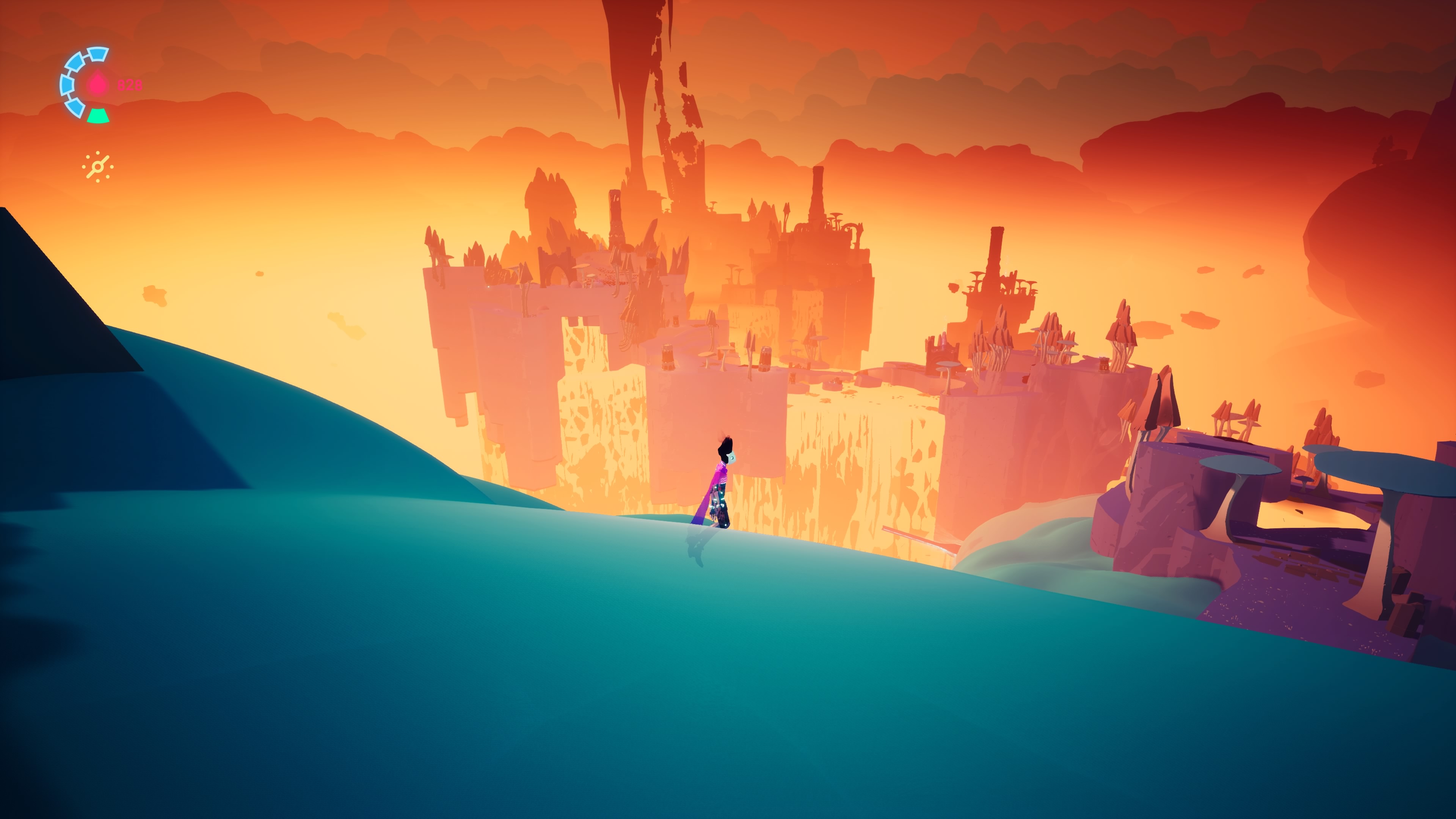
While this makes sense in accordance with the game’s story, it results in a few underwhelming visual moments. When the skybox, shrouded distant objects and destroyed environment mesh perfectly together, Solar Ash evokes the quality of a vibrant post-apocalyptic painting. But when the view distance reveals a little too much or the surrounding land masses are flat, that ethereal illusion is shattered.
Solar Ash’s trite design choices don’t help, either. Every enemy in the game is a monster made of black sludge, which is the most common creature trait in video games. And its obsession with iconography relating to the void and disconnected floating islands is similarly overdone in indie games. This is likely because it makes designing a level easier when it doesn’t need to be connected to anything. Because of this, it’s not a particularly offensive trope, but it would have helped if Solar Ash had more going on at a ground-level. This is part of the reason why the limited draw distance helps to give the world a grander sense of scale than it actually has.
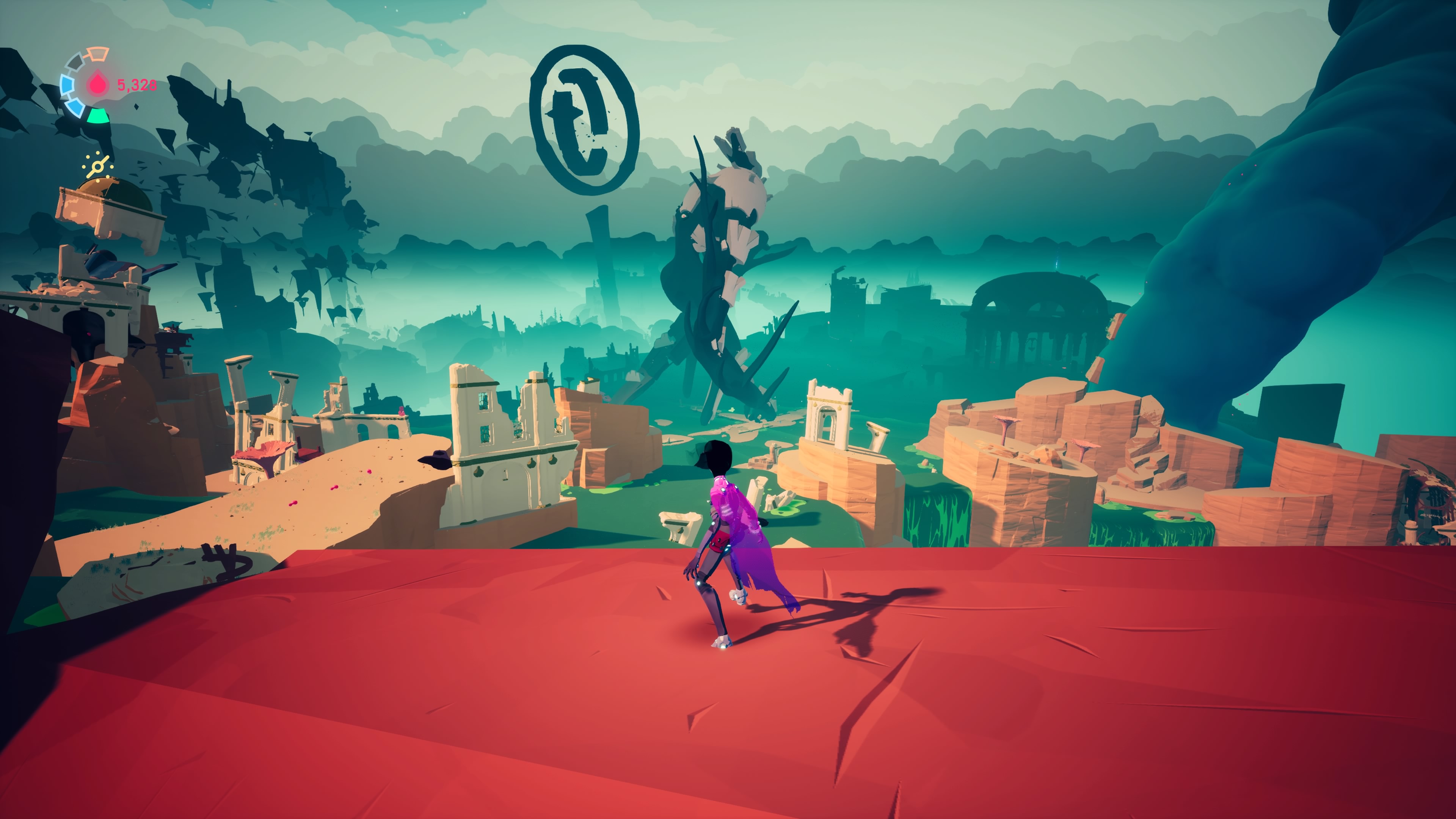
Mirrorsea does a great job establishing the aforementioned sense of scale. The disjointed floating islands can look great at certain angles, but nothing beats one colossal space that allows Rei to freely skate across it. While it’s still on a floating island, the togetherness makes it more convincing as a fully realized idea.

Ultimately, Solar Ash’s conventional design choices don’t stop the game from being gorgeous, and even in regards to its predictable elements, Heart Machine manages to make these ideas exciting in some way. This is especially true with its skyboxes; everywhere Rei goes, the remains of her near-destroyed home follows suit. Combined with the paper-like clouds, twinkling stars and silhouettes of the disfigured architecture, it meshes together to create an awe-inspiring sight.
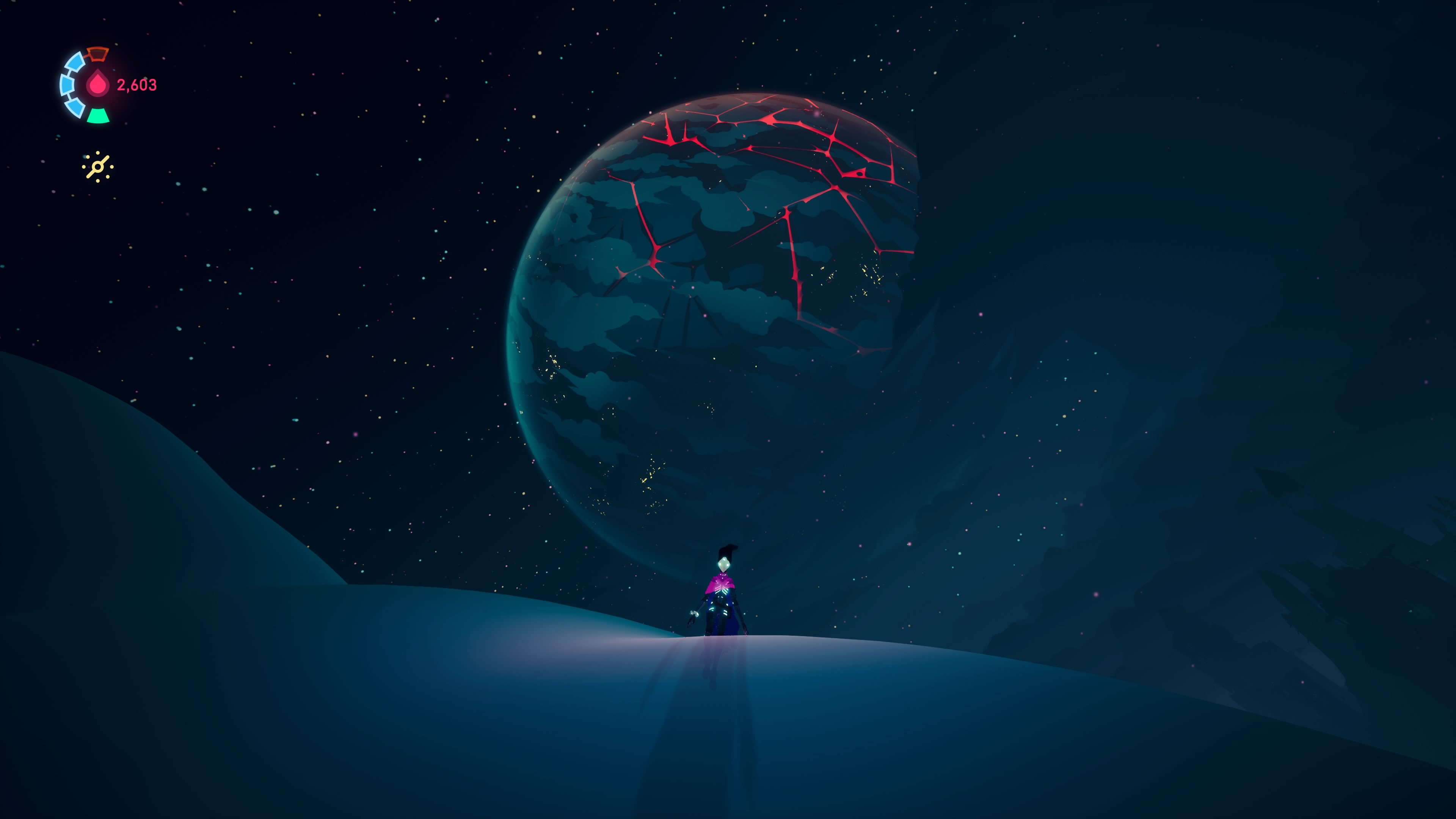
Areas like the Eternal Garden are where Solar Ash is at its best. Whether I was exploring the insides of a gothic castle overrun by fungi growths, solving puzzles within the depths of a dark dungeon, or sprinting away from a giant multi-limbed beast on top of a floating celestial body, this domain is full of remarkable ideas.
Softcore parkour
Solar Ash becomes formulaic once the player understands the game’s language. To proceed with the story, a series of timed challenges across a zone need to be completed. These are relatively short sprints that have the player skating and parkouring from one point to another and slashing or grappling at nodes. Conceptually, these should be difficult sections that force the player to utilize their swiftness in clever ways.
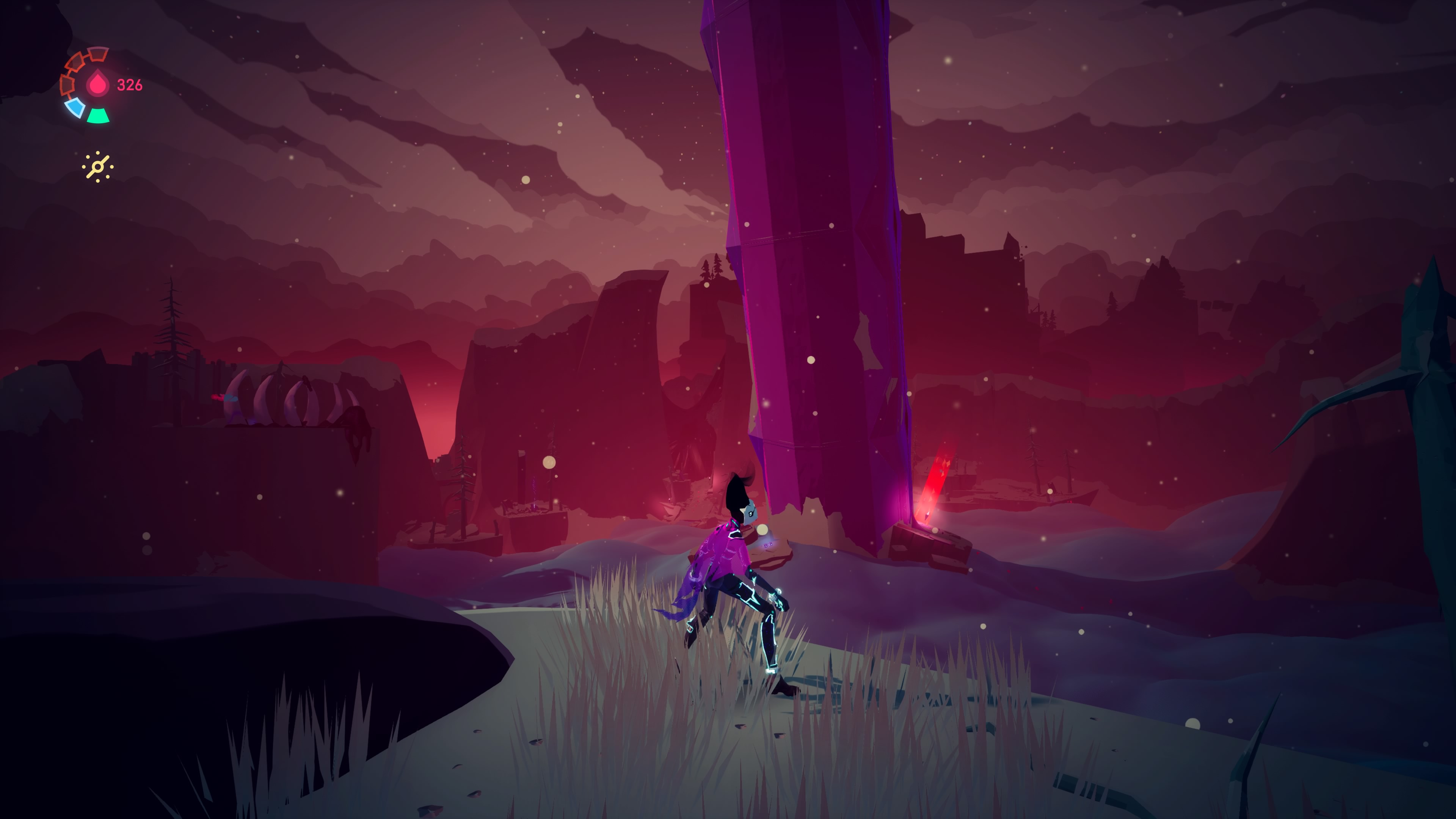
Unfortunately, the application is deceptively simple. A chunk of these parkour sections are too small and lack distinctive puzzle elements. They’re certainly fun, but sometimes I completed a challenge and wondered what it contributed to the experience. If a sprint doesn’t revolve around a unique puzzle, challenge the player or allow for creative parkour maneuvers, it might need some tweaking. One particularly memorable challenge required the player to hit a couple of giant leafs to create a skating rail to launch themselves around the nodes. While this wasn’t difficult, it’s more involved than just sprinting across a surface and hitting something.
Thankfully, at least half of the challenges in Solar Ash allow the player to utilize Rei’s maneuverability in fun ways. And beyond that, there are plenty of parkour puzzles and secrets littered around the world.
Solar of the Colossus
Finishing every challenge in an area causes a tremendous shift in the landscape. A brief cutscene plays showcasing the emergence of a gargantuan anomaly breaking away from what bound it. The sight of each colossal creature casually walking or flying around the spot you just explored creates an unforgettable sense of scale. And as the player skates towards it, they can grapple onto one of its appendages to begin the battle.
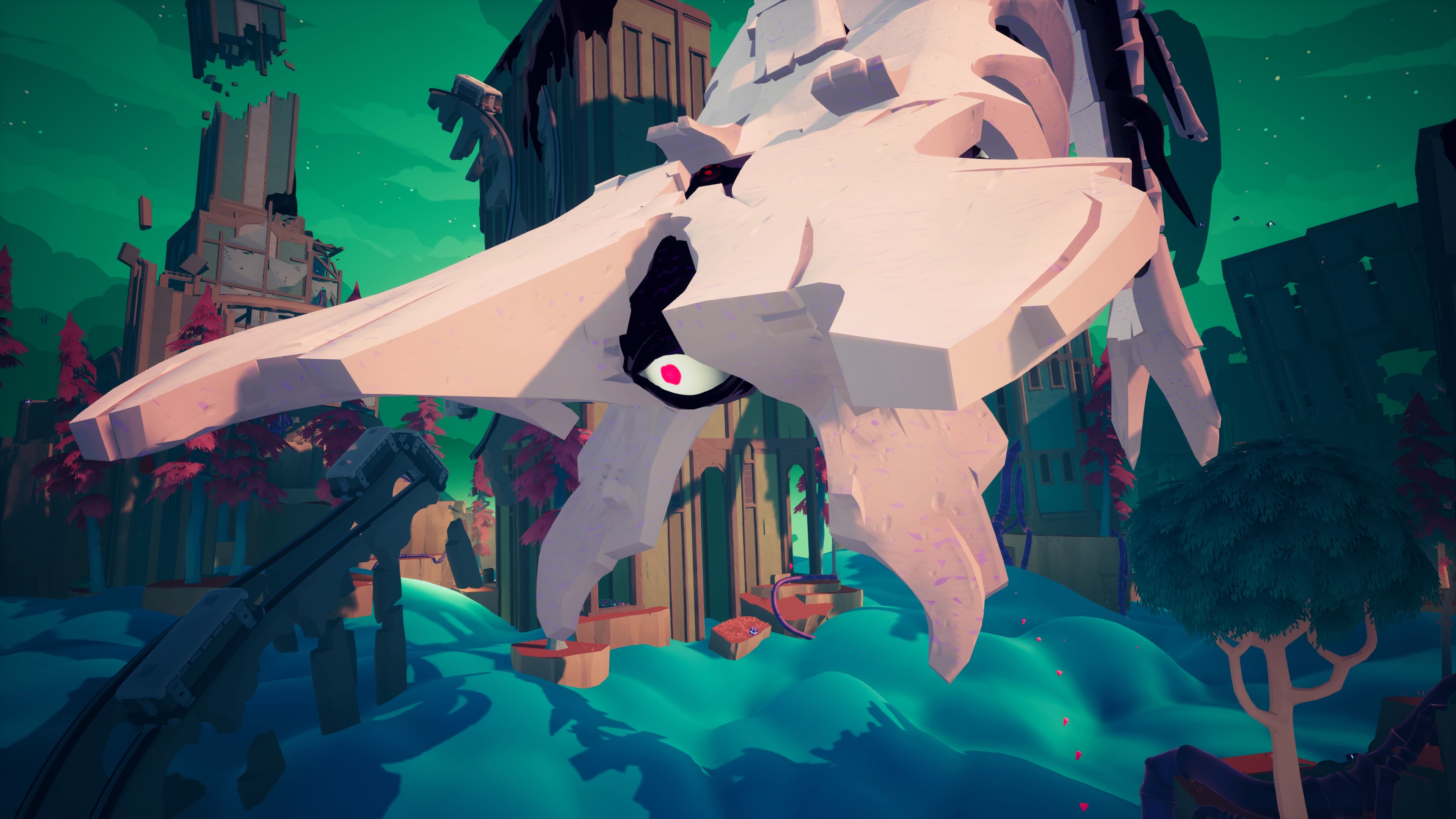
This is where the game shines; players race against Solar Ash’s strict timer as they parkour across a massive being, carefully planning every leap and strike. Failure results in being flung off the towering monster, forcing the player to restart that section of the fight. Each boss is split up into three phases, and once the last one begins, the game’s bombastic orchestral soundtrack shifts into a droning melody accompanied by piercing synths. This disturbing sensation makes it evident that these creatures, otherwise known as Remnants, are scared of us. They’re merely encircling each level, and rather than attack us with ferocity, some are passive as we destroy them. If you listen carefully, you can hear their hopeless cries echo throughout space.
Bottom line
Solar Ash is both inspiring and uninspired. Phenomenal and underwhelming. It’s strengthened by incredible segments, although hindered by lukewarm ideas. Heart Machine’s love for this project is tangible, but an underwhelming application of battle systems, commonplace visual concepts, and overly simple sprinting challenges are among the most notable reasons why it falls short of greatness.
Yet beyond those issues lies beauty. It has some of the most evocative visual moments from any game this year, to the degree that I audibly uttered “wow” more than once. Solar Ash misses beats, but everyone needs to experience the fantastic somberness of this dismal world.

Self-described art critic and unabashedly pretentious, Claire finds joy in impassioned ramblings about her closeness to video games. She has a bachelor’s degree in Journalism & Media Studies from Brooklyn College and five years of experience in entertainment journalism. Claire is a stalwart defender of the importance found in subjectivity and spends most days overwhelmed with excitement for the past, present and future of gaming. When she isn't writing or playing Dark Souls, she can be found eating chicken fettuccine alfredo and watching anime.
